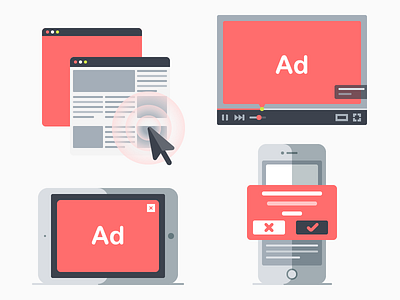In-Page Push Ads: The Next Evolution in Digital Advertising
In-Page Push Ads: The Next Evolution in Digital Advertising
Blog Article
As the digital advertising landscape is constantly on the evolve, marketers are constantly in search of innovative ways to capture user attention without being intrusive. One such innovation containing gained significant traction in recent years is in page push. Combining the familiarity of traditional push notifications using the seamless integration of display ads, in-page push ads offer a unique and effective way to interact users while they browse the web.
What Are In-Page Push Ads?
In-page push ads are a type of digital advertisement that appears within a webpage, mimicking the look and feel of traditional push notifications. Unlike standard push notifications, which are delivered directly to a user’s device (e.g., smartphone or desktop), in-page push ads are displayed inside the browser window as the user is actively browsing an internet site. They typically appear as small, non-intrusive banners or boxes that slide in from your corner in the screen, often which has a compelling message, image, or call-to-action (CTA).
These ads not one of them users to opt-in or grant permission, making them easier to deploy in comparison to traditional push notifications. However, they're designed to be less intrusive than pop-ups, ensuring a better user experience while still delivering high visibility for advertisers.
Why In-Page Push Ads Are Gaining Popularity
No Opt-In Required
One of the biggest challenges with traditional push notifications could be the need for users to opt-in to obtain them. In-page push ads eliminate this barrier by appearing directly within the webpage, making sure your message reaches a wider audience without requiring prior consent.
High Visibility and Engagement
In-page push ads are designed to grab attention without disrupting the buyer experience. Their placement within the browser window ensures they may be seen, while their non-intrusive nature reduces the likelihood of users immediately closing them. This balance of visibility and user-friendliness leads to higher engagement rates in comparison to traditional pop-ups or banners.
Seamless Integration with Content
Unlike traditional display ads that can feel disconnected from your content of a webpage, in-page push ads blend more naturally in the browsing experience. They are often made to match the look and feel in the website, driving them to less disruptive and much more likely to resonate with users.
Cross-Platform Compatibility
In-page push ads work seamlessly across devices, including desktops, tablets, and mobiles. This cross-platform compatibility ensures that your ads reach users regardless how they access the web, causing them to be a versatile tool for digital marketers.
Cost-Effective and High ROI
In-page push ads are usually more affordable than other designs of digital advertising, including video ads or native ads. Their high engagement rates and ability to drive clicks and conversions get them to a cost-effective selection for businesses aiming to maximize their roi (ROI).
Easy to Implement
For publishers and advertisers, in-page push ads are relatively easy to implement. They not one of them complex coding or integration, making them accessible to businesses of all sizes.
Best Practices for In-Page Push Ads
To maximize in-page push ads, it’s important to follow recommendations that ensure effectiveness while keeping a positive buyer experience:
Keep It Simple and Clear
In-page push ads have limited space, so give attention to delivering a concise and compelling message. Use clear, action-oriented language and can include a strong CTA to encourage clicks.
Use Eye-Catching Visuals
Since these ads count on visual appeal, use high-quality images or graphics that grab attention. Ensure the design aligns with your brand identity and also the overall look with the website.
Time Your Ads Strategically
Avoid displaying ads to soon or too frequently, since this can annoy users. Use timing triggers, including when a user has scrolled through a certain percentage from the page or spent a specific amount of energy on the site.
Target the Right Audience
Leverage data and analytics to target your in-page push ads for the most relevant audience. Consider factors like user behavior, demographics, and browsing history to provide personalized and relevant messages.
Optimize for Mobile
With virtually all web traffic coming from mobile devices, ensure your in-page push ads are optimized for smaller screens. Use responsive design and test out your ads across different devices to make certain a seamless experience.
Monitor and Adjust
Continuously monitor the performance of your respective in-page push ads, including click-through rates (CTR), sales, and user feedback. Use this data to refine your strategy and improve results over time.
The Future of In-Page Push Ads
As digital advertising is constantly on the evolve, in-page push ads are poised to try out an increasingly part. Advances in AI and machine learning will enable even more precise targeting and personalization, allowing advertisers to deliver hyper-relevant messages to users. Additionally, the integration of interactive elements, for example quizzes or mini-games, could further enhance engagement to make in-page push ads a lot more effective.
In conclusion, in-page push ads represent an effective and innovative advertising format that combines the best of push notifications and display ads. By delivering high visibility, seamless integration, and cost-effective results, they give you a compelling solution for marketers looking to have interaction users in the non-intrusive way. As the digital landscape is constantly shift, in-page push ads are likely to become an essential tool in each and every marketer’s toolkit.